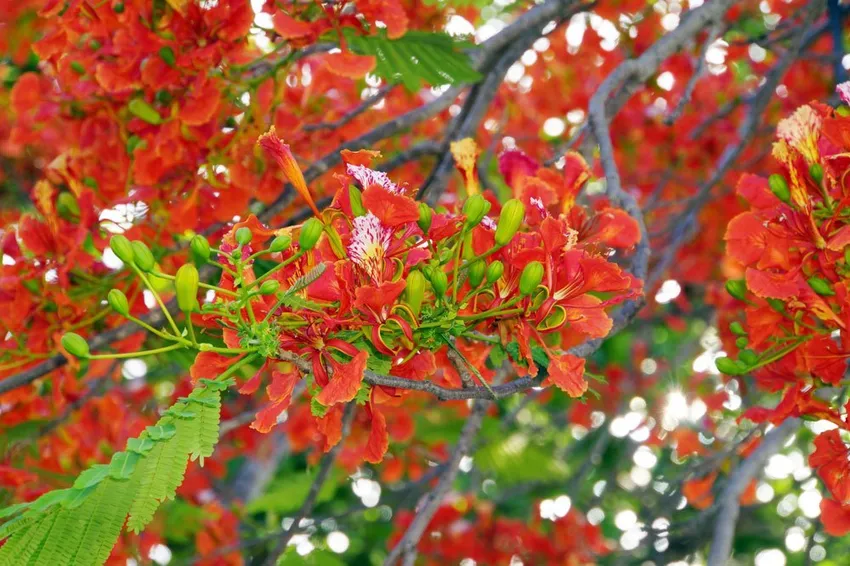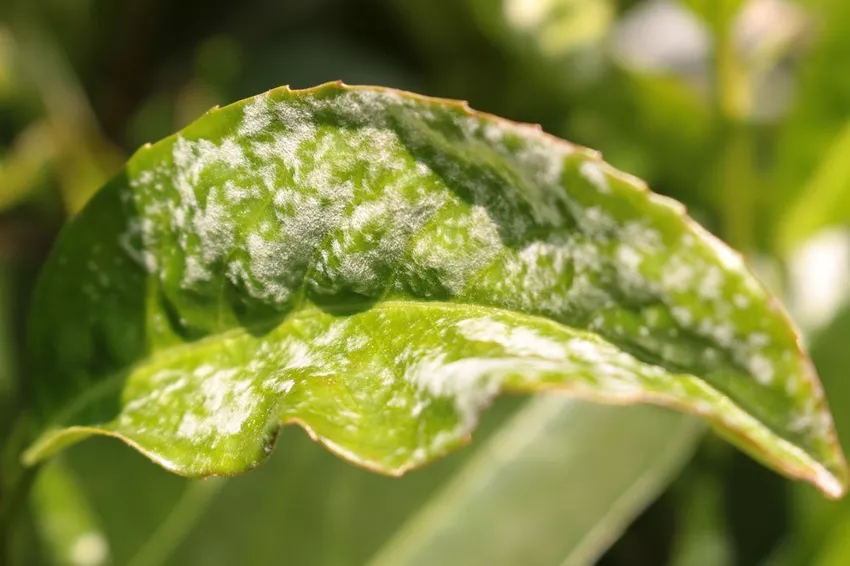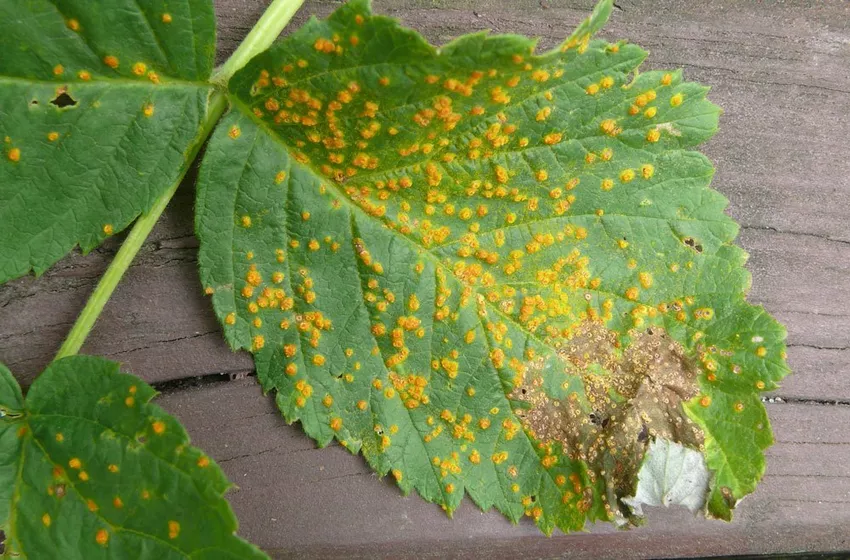The flame tree rarely shows diseases or pests. However, there are a few things to keep in mind, especially with potted plants, to prevent an infestation.
 The flame tree (Delonix Regia) transforms your garden into a sea of colors with its magnificent blossom. In addition to the fiery red blossom, the expansive treetop is also an expressive sight and a welcome source of shade in summer. Flame trees impress with their exotic charm and it is surprising that they are actually quite easy-care plants. If you follow a few care instructions, the flame tree will delight you with its vigorous growth and lush flowers. In the following, we will tell you which diseases and pests still occur and what you can do about them.
The flame tree (Delonix Regia) transforms your garden into a sea of colors with its magnificent blossom. In addition to the fiery red blossom, the expansive treetop is also an expressive sight and a welcome source of shade in summer. Flame trees impress with their exotic charm and it is surprising that they are actually quite easy-care plants. If you follow a few care instructions, the flame tree will delight you with its vigorous growth and lush flowers. In the following, we will tell you which diseases and pests still occur and what you can do about them.
Pests on the Flame Tree
Pests hardly ever occur on the flame tree, only during the winter months it can happen that pests nest. It is therefore important to keep an eye on flame trees during the winter months and to check for a possible infestation.
What pests can occur?
- White Fly
- scale insects
» White Fly
If yellow leaves appear on the plant, the leaves dry up and are eventually shed, a whitefly infestation may be the cause. The pests are unmistakable and fly up in droves as you approach the tree. If you have found an acute infestation, the use of appropriate pesticides will help. Commercially available yellow boards can be used to prevent this from happening in the first place. These are simply hung in the tree and prevent the pests from spreading.
» Scale insects
If the plant dwindles noticeably during the winter months, scale insects could be behind it. You can easily determine this by taking a closer look at the individual parts of the plant. Scale insects are easy to see with the naked eye and usually form dense and crusty deposits on the leaves or stems of the tree. If the infestation is detected in good time, the pests can usually be removed easily by spraying the plant with soapy water or by removing the scale insectsjust brush off. Only when the infestation is advanced should you resort to appropriate pesticides to save the flame tree.
What diseases are observed?
The flame tree is generally quite robust and is rarely attacked by diseases. Occasionally, however, the following diseases can occur:
- Mildew
- Rust
» Powdery mildew - appearance, control and prevention
 Powdery mildew is widespread and occurs in over 100 different species. Some varieties, such as apple powdery mildew, are species-specific and can only be detected on certain plants. A general distinction is made between powdery mildew and downy mildew. Powdery mildew is considered a fair-weather fungus and usually occurs when it is too warm and too dry.
Powdery mildew is widespread and occurs in over 100 different species. Some varieties, such as apple powdery mildew, are species-specific and can only be detected on certain plants. A general distinction is made between powdery mildew and downy mildew. Powdery mildew is considered a fair-weather fungus and usually occurs when it is too warm and too dry.
The downy mildew is of concern to the flame tree. The fungus thrives in a moist environment and is also known as the "bad weather fungus". In addition to ornamental plants, numerous useful plants such as lettuce, spinach, onions and cabbage are also affected. Downy mildew is clearly visible on both sides of the leaf. The undersides of the leaves are covered with a white coating. In addition, a greyish fluff usually develops. The tops of the leaves lose the leaf green in places and yellowish spots appear. The leaves dry up and eventually fall off.
Caution: If downy mildew is left untreated, the entire tree can die.
If you notice the infestation, the corresponding leaves must be removed quickly. These do not belong in the compost, but should be burned or disposed of with household waste. Downy mildew can be combated very well in natural ways. Broths and tinctures made from garlic, horsetail or tansy have proven themselves.
How can powdery mildew be prevented?
If the flame tree is too wet, mildew infestation is almost inevitable. Don't water too much and check the substrate for potted plants. If it feels damp, don't water. Waterlogging is to be avoided in any case. The choice of location should also be considered: If the plants are too close together, this promotes fungal infestation. Sufficient light and sun should be able to reach the flame tree. Regularly remove the weeds around the flame tree, the fungus can nest there too and then spread to the flame tree. Mildew can be avoided by the targeted use of some plants.
The following herbs are therefore suitableas planting and underplanting:
- Chives
- Chervil
- Basil
» Rust on the flame tree - what needs to be considered?
 Rust can also develop if the flame tree is too wet. A sheltered location is therefore recommended so that heavy rainfall cannot penetrate unhindered to the plant. You will first notice the infestation with rust on the upper side of the leaves. Yellow-brown spots appear there, extending to the entire surface of the leaves. A short time later, the underside of the leaf is also affected, because this is where the fungal spores spread. These are recognizable in the form of pustules, which develop exactly opposite the leaf discolouration.
Rust can also develop if the flame tree is too wet. A sheltered location is therefore recommended so that heavy rainfall cannot penetrate unhindered to the plant. You will first notice the infestation with rust on the upper side of the leaves. Yellow-brown spots appear there, extending to the entire surface of the leaves. A short time later, the underside of the leaf is also affected, because this is where the fungal spores spread. These are recognizable in the form of pustules, which develop exactly opposite the leaf discolouration.
Rust comes in different colors. Initially, the rust spots can appear yellow or orange, in the later stages of development the rust is more reddish brown. The leaves wither and eventually fall off. Usually only the leaves are affected, but the occurrence of rust diseases on shoots and sprouts is also possible. The plant is dying and hardly blooms. In most cases, however, the flame trees survive the rust disease relatively unscathed.
Rust spreads quickly. If the spore deposits, which are recognizable as pustules, burst, the wind carries the spore powder to other plants, where all that is required is a moist environment and the disease has broken out again.
How to fight rust?
If the disease is recognized in time, it is very possible to fight it. Immediately remove all affected parts of the plant.
Tip: The leaves lying on the ground must also be removed and destroyed. Otherwise the fungus can continue to spread unhindered.
Removed plant parts do not belong in the compost, the fungus can continue to spread there unhindered. If you cut back into the he althy wood, the infestation is usually contained and the flame tree will grow back he althily.
How to prevent rust?
Always only water the plant from below and avoid the leaves. A protected location makes sense so that the leaves are not affected by moisture for too long, for example after heavy rainfall. Vigorous plants are generally less likely to be affected by diseases. Ensure a balanced fertilization and strengthen the flame tree with natural means, for example the regular doses of horsetail broth.
Avoid care mistakes
It is not uncommon for growth disorders and restrictions on the abundance of flowers to result from care errors. Bigger mistakes likestanding too wet are the main causes of disease occurrence.
You will get he althy and vigorous plants if:
- a bright location is chosen for the flame tree
- the flame tree is not too sunny
- the flame tree is given sufficient space
- the flame tree is placed out of the wind
- the flame tree hibernates bright and warm
- the flame tree contains high-quality potting soil - mixed with gravel or expanded clay
Flame tree care tips at a glance
| Care Measure | Explanation |
| Casting | The flame tree only needs regular and sufficient watering immediately after planting. Otherwise, watering is moderate. Avoid waterlogging in any case. |
| Fertilize | Flame trees should be adequately supplied with nutrients. Fertilize about every three weeks between May and October. A horsetail broth can be used as a general tonic. |
| Repotting | If the planter has become too small, the flame tree can no longer develop optimally and is therefore more vulnerable to diseases. The plant should be placed in a new container about every two years. It is also important to replace the substrate, which will be used up over time. |